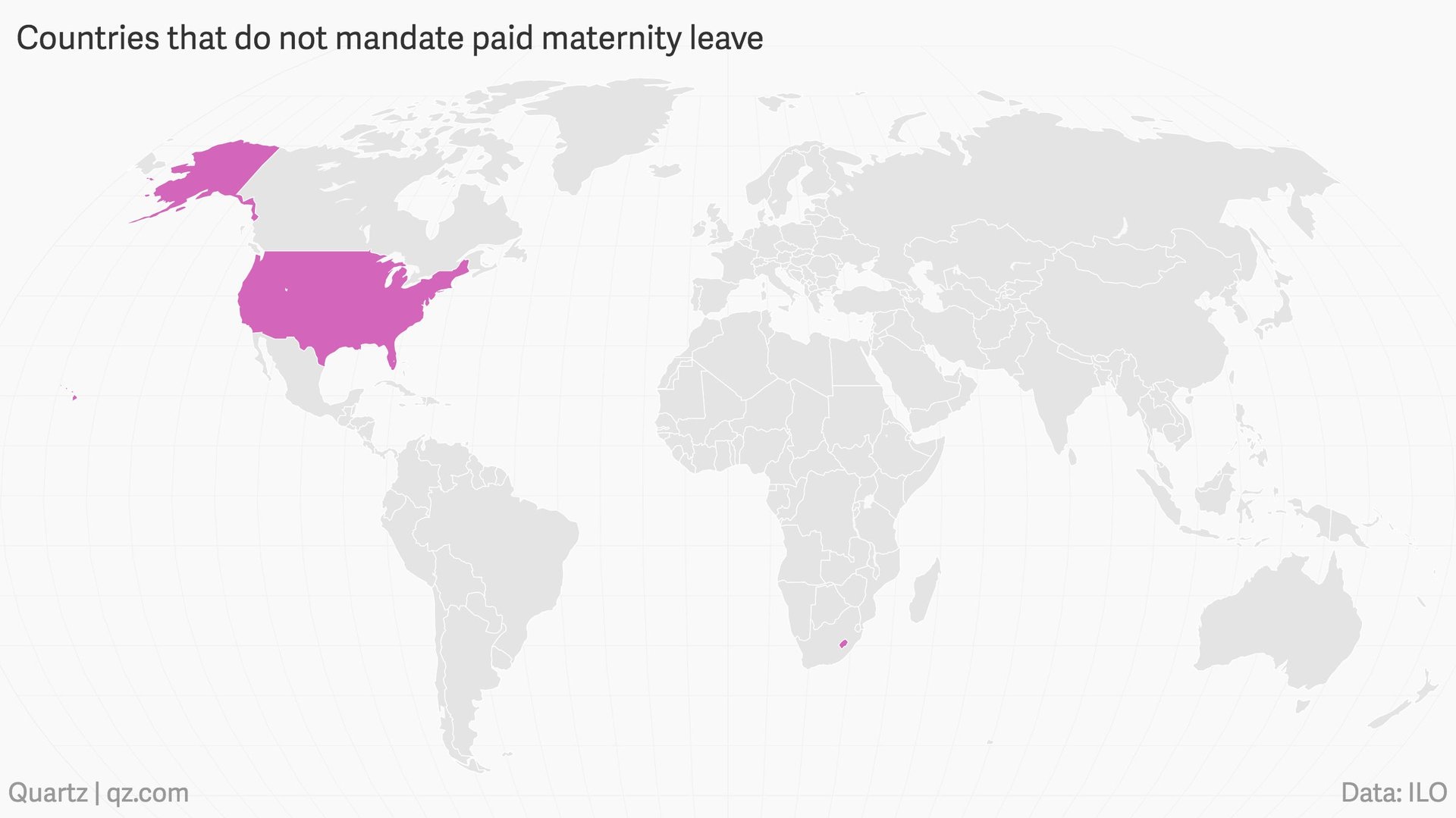The US has a lot of money, but it does not look like a developed country
The US is the world’s largest national economy, and the epitome of industrialization. Because of its wealth, high standards of living, and availability of world-class services, many Americans believe theirs to be one of the better—or outright best—countries in the world to live.


The US is the world’s largest national economy, and the epitome of industrialization. Because of its wealth, high standards of living, and availability of world-class services, many Americans believe theirs to be one of the better—or outright best—countries in the world to live.
Measuring wellbeing can be tricky: Seemingly objective standards, like income, are affected by the availability of social services, which improve life even for low-earners. Infant mortality, another common measure of wellbeing, can actually be higher in countries where advanced healthcare technologies allow premature babies to be born in the first place. Nonetheless, there are some comparisons we can make: In 2015, the United Nations defined 17 goals for any country claiming to achieve complete sustainable development. Those goals range from ending poverty, to gender equality, to environmental preservation.
Quartz used those goals to compare the US development to that of other wealthy nations, following the blueprint of a 2016 report by the Organization of Economic Cooperation and Development (OECD). We found that the US performs scores dismally in most areas—such as healthcare, education, and violence.
Below is a breakdown that shows how the US fares for 11 of the 17 goals. Since the US ranks about average in water and sanitation, sustainable production and consumption, ocean preservation, and landscape preservation, we didn’t highlight those in the analysis. We also didn’t look into climate change, as the sheer size and population of the US make it difficult to compare its impact with other countries, and didn’t explore the last development goal, global partnership, as it’s intended as an instrumental tool to implement other goals.
The analysis proves that, while Americans may be doing relatively fine, “best country to live in” is a serious stretch.
Poverty
The US has the second-highest rate of poverty among rich countries (poverty here measured by the percentage of people earning less than half the national median income.)
According to a 2012 UNICEF study, 23.1% US kids live in poverty. Other studies place the number a little lower, at about 20%, but both numbers are much higher than in other advanced countries. For black and Hispanic American children, the poverty rate is even higher, at 36% and 31%.
Food security and nutrition
Food security is reflected in both access to food and diet quality. Obesity is a primary indicator of poor diet, and although the US isn’t the fattest country in the world (several Pacific island countries, as well as Qatar and Egypt, precede it), it leads OECD countries in obesity.
When it comes to food production, things aren’t quite as dramatic, though the US soil’s level of fertility is below the OECD average. Although its agricultural production remains one of the world’s largest, the country’s output growth was about 1% between 2003 and 2012—less than half of the OECD average of 2.5%.
Health
Americans spend nearly 17% of GDP on health care, with a yearly per capita cost of over $9,400. That’s $1,600 more than the second-highest spender, Luxembourg, and more than double the OECD average.
But while Americans spend enormously, they remain in relatively poor health. The US has fewer physicians, hospital beds, and psychiatric care beds than most other economically advanced countries, ranking towards the bottom in each of these parameters. The US is also the only advanced economy in the world not to have full health coverage of its population.
Things aren’t better when it comes to mortality. Child mortality is higher in the US than any other advanced economy, and adult Americans also live shorter lives: Average US life expectancy is 78.8 years, nearly two years less than the OECD average. For comparison, Japan has the longest life expectancy in the OECD, at 83.7 years.
The US also stands out as one of the only countries in the world where maternal mortality has increased, rather than decreasing, over the past 15 years.
Education
When it comes to education, US schools are mostly distinguished by their high cost. The US is among the five countries spending the most (pdf, p. 10) on education between pre-primary and secondary school. Plus, Americans spend far more on higher education: The cost (direct and indirect) of a tertiary degree in the US is around $110,000 for both men and women, against an OECD average of $50,000 for men and $40,000 for women.
In the US, early childhood education is attended by fewer children (55% versus an OECD average of 84% attendance), at an older age (four years old, versus three years old), and can be administered by untrained professionals. Most other high-income OECD countries have specific educator certification requirements.
Perhaps unsurprisingly, the US fares just about average among OECD countries when it comes to basic literacy and problem solving skills. Advanced literacy (pdf, p.15) in the US is below the OECD average. Basic numeracy in the US is lower than in most other wealthy OECD nations.
Gender equality
Gender equality is a point where the US does relatively well. Unlike previously analyzed indicators, the US doesn’t much differ from countries such as the UK, Australia, or Austria. The US also reports a high level of perceived safety by women walking home on their own. However, the share of US women who experience violence in their lifetime is much higher than the OECD average (though reporting violence in some countries may be discouraged).
US women’s political representation also leaves much to be desired, with less than 20% of congressional seats occupied by women. Sweden, the OECD leader, has nearly 45% in its national parliament, and the global average is nearly 27%. Female representation on the boards of publicly traded US companies is also below OECD average. To top it off, the gender wage gap is also bigger in the US.
The US is also, with Lesotho, one of only two countries in the world that do not mandate paid maternity leave.

Energy
America excels in access to energy: 100% of the US population has access to electricity. What it doesn’t excel at, however, is renewable electricity sources: Only 12% of US energy output is renewable, far below the European, world and OECD average.
Employment
Despite the much-discussed need to bring jobs back to the US, there are plenty of jobs in the country. Employment is one of the parameters in which the US does better than many other advanced economies, with low unemployment, high employment, and low share of youth who are neither working nor studying.
The US also does remarkably well in employing immigrants. At 5.8%, unemployment among immigrants in the US is lower than among native-born Americans, and one of the lowest among OECD countries.
Infrastructure
That the US needs better infrastructure is a bipartisan belief of late. As Barack Obama did before him, Donald Trump has highlighted the dire state of American transportation infrastructure, and promised massive investment in that respect. Current US investment in infrastructure is only 75% of the average OECD nation.
The US is also one of the countries with the highest number of deaths resulting from car accidents.
Inequality
The US has the highest income inequality of all rich countries. Income inequality is calculated by the OECD combining several indexes, including a ratio of the income of the highest 10% and of the lowest 10%.
Housing and urban development
Americans like their homes big—and they have them so. Each American has, on average, 2.4 rooms to live in, while the average OECD citizen has 1.8.
Only Canadians, at 2.5, have more rooms per capita. But while Canadians spend 21% of disposable income on their many rooms, lucky Americans spend only 19% on housing, on average.
Peaceful living
Measuring a nation’s quality of life and development also includes intangible measures, such as the incidence of violent crime and democratic participation. In those aspects, the US fares pretty poorly: Deaths by assault are almost five times as high in the US as the OECD average (with the exception of Mexico).
The US also has one of the highest ratios of childhood death by injury (both intentional and unintentional). This accounts for nearly half of all US childrens’ deaths (pdf, p. 7, 8).
When it comes to democratic institution, the US has one of the lowest turnouts among high-income countries. (The US is one of the few countries where eligible citizens aren’t automatically registered to vote.)
Correction: An earlier version of the story featured a chart that showed growth in GDP per person per hour, but mistakenly introduced as GDP per person per hour.